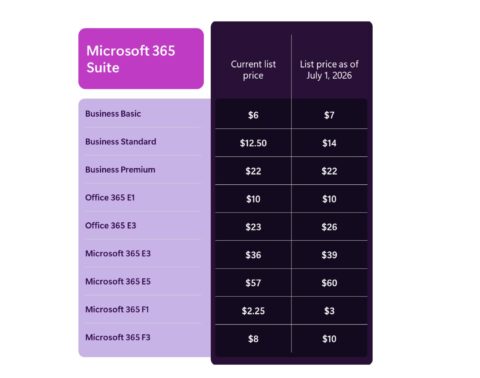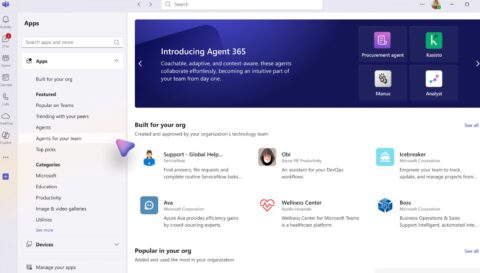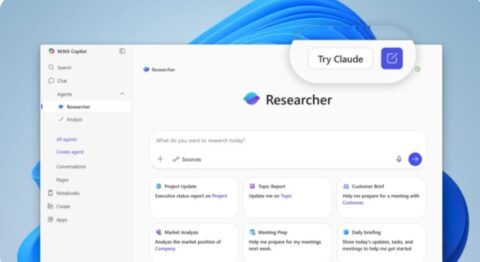Updated: April 8, 2024 (March 12, 2024)
BlogMicrosoft to support classic Outlook for Windows (for some) until at least 2029

Microsoft is continuing its relatively slow march toward delivering the new Outlook for Windows. Last year, officials said the rollout would be gradual, taking years to go from preview to the final phase-out of the existing Outlook for Windows client. As of last week, we now know some commercial customers with classic Outlook will be able to hang onto the existing version of the app until at least 2029.
Microsoft has been working on consolidating its Outlook mail and calendar client apps for Windows since 2021, if not longer. The planned replacement, which was formerly codenamed “Project Monarch,” looks and feels a lot like the current Outlook web client for Windows.
Many features that are in the existing classic Outlook still are missing from the new Outlook for Windows. A lot of the public feedback on social media and various web sites about the new Outlook preview has been critical and negative, which makes the final phase-out date for classic Outlook being at least five years away not too surprising.
To date, Microsoft has released very few tangible dates as to when customers should expect the current Outlook app to be replaced by the new updated Outlook client. Last year, officials did say they planned to replace the Mail and Calendar apps built into Windows 11 with the new Outlook by the end of calendar 2024.
As of last week, we also know that Microsoft will “continue to honor published support timelines for existing version of classic Outlook for Windows until at least 2029,” according to “A Guide to Product Availability” blog post from the company. There are no other delivery dates in the post aside from the 2029 reference. Instead, officials reiterated the steps toward delivery they are planning.
On the new Outlook roadmap
Currently, new Outlook customers are only at the opt-in preview stage. The next planned milestone — for which the company still is not providing a date — is general availability. At GA, feature development will still be ongoing, but customers who are ready to move to the new Outlook will be “fully supported” by Microsoft.
Sometime after GA, Microsoft will hit the “opt-out” milestone, during which the new Outlook will be “on by default,” but customers can still roll back. The “cutover” stage, during which the switch back to classic Outlook will no longer be available for new deployments of Outlook from Microsoft 365 subscriptions, is slated for some time after that.
During cutover, “existing installations of classic Outlook for Windows through perpetual licensing will continue to be supported,” officials said. Microsoft has yet to publicly announce its next promised perpetual (non-subscription) release of Outlook and Office. In 2021, officials did say there would be at least one more perpetual Office release, and there have been sightings of what seemingly is Office 2024, which would be supported until 2029 if Microsoft offers a five-year support window.
Update (March 19): Microsoft announced that Office LTSC 2024 and Office 2024 will be available later this calendar year and both will get five years of support. Officials also said there will be at least one more perpetual version of Office after 2024.
“Outlook classic could disappear from Microsoft 365 Apps for Enterprise — the one you get with Microsoft 365 and Office 365 subscriptions — any time. Versions of that only live around 14 months, so that could be your lead time for migrating off classic Outlook,” warned Directions on Microsoft analyst Rob Helm.
Last fall, Microsoft officials said that while there was no exact cutover date for dropping the current classic Outlook client, the likely cutover milestone was roughly two years out (which would have put it at 2025) and ultimately would be determined by readiness of the product, as assessed by customers and Microsoft.
New Outlook still missing features
Over the past year, Microsoft has added to the new Outlook for Windows some of the missing features customers consider “must-haves,” including Gmail, Yahoo, iCloud and iMAP account support; ICS file support; Quick steps; sort by sender or subject line; and find related messages.
However, there are still a lot of gaps. Microsoft updated its list of “things we have in the works” for the new Outlook in late February 2024. At that time, the company listed offline support and Teams Chat in Outlook as starting to roll out in March. But still missing with no published ETA: POP3 account support, PST file support, S/MIME, and more.
A reminder: One feature from classic Outlook which will not be available at all with the new Outlook is COM add-in support. Microsoft officials said these add-ins are often unstable and don’t work cross-platform.
To try to appease customers who are dependent on tools and line-of-business apps that require legacy COM add-ins, Microsoft officials said they are “actively expanding” the capabilities of the web add-ins platform. They also said they will work directly with customers to figure out which add-ins are not supported. Microsoft officials maintain that most great add-ins are not just COM-based and exist in other formats, but not all customers seem to buy that claim.
“Some companies might want the new Outlook. I believe Microsoft is going to use it to quickly shim in newer collaboration technologies like Loop and Teams for the huge base of Outlook users, and some of Microsoft’s customers see those technologies as the long-term replacement for e-mail. But Microsoft’s announcement shows it sees that as a _very_ long term plan,” said Directions’ Helm.
“I hope that means it won’t mangle Outlook the way it did OneNote as it tries to drag it into the future,” he added.
Related Resources
Microsoft blog: New Outlook for Windows: A Guide to Product Availability
Microsoft’s updated list of features coming to the new Outlook for Windows
From 2023: Ready or Not: Microsoft’s new Outlook for Windows forges ahead
M365 Roadmap publishes some of the coming new Outlook features















